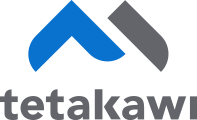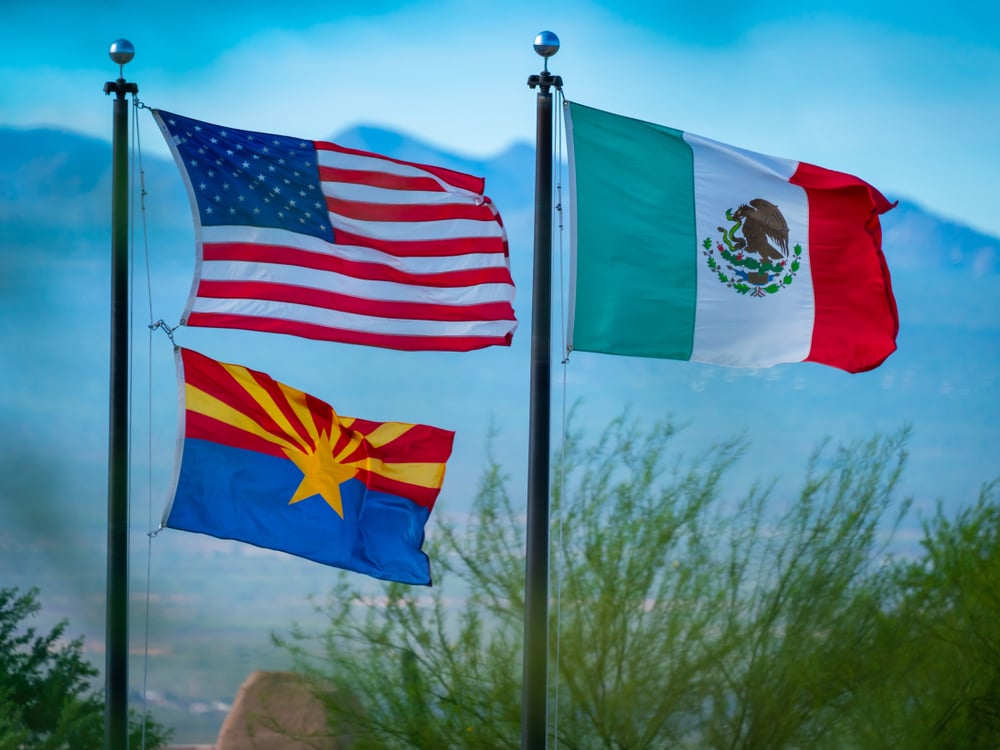For manufacturers across North America, the case for Mexico has never been clearer. Nearshoring brings access to a younger, cost-competitive workforce and dramatically shortens supply chains under USMCA, reducing tariffs and geopolitical exposure.
But while Mexico is the obvious answer at the macro level, the real question for most leadership teams isn’t whether to manufacture there, it’s where inside Mexico to build or expand. That decision shapes your costs, operational risk, and growth potential not just in year one, but over the next decade.
Too often, companies default to Mexico’s most recognized industrial regions simply because they’re easier to justify. Established hubs come with supplier density, boardroom familiarity, and plenty of peers. Yet these same factors can quietly become liabilities over time, especially if your long-term advantage depends on scaling without runaway wages or repeated retraining.
Mexico’s fundamentals still make it the strongest nearshoring choice
Step back, and Mexico stands apart from reshoring or Asia on nearly every major dimension:
-
Demographics: With a median age under 30, far more workers are entering the labor market than retiring, a structural edge the U.S. and China can’t replicate.
-
Wages: Fully fringed unskilled manufacturing averages about $6.50/hour, with engineers near $2,600/month, maintaining a decisive gap even after logistics.
-
Trade & logistics: Under USMCA, goods move tariff-free with simpler compliance, insulating manufacturers from the geopolitical swings that still complicate Asian supply chains.
But these are national averages. Inside Mexico, every region comes with very different realities that can make or break your multi-phase strategy.
Mexico isn’t a uniform market, each region carries its own trade-offs
Most companies evaluate Mexico by regional cluster, not just individual cities. Here’s how typical fully fringed wages in Mexico stack up for unskilled operators, maintenance technicians, and engineers, ordered highest to lowest so you can quickly see where structural risks concentrate.
| Region / Cluster | Example Cities | Unskilled (Fully Fringed) |
Maint. Tech (Fully Fringed) |
Entry Engineer (Fully Fringed) |
Key Notes |
|---|---|---|---|---|---|
| Border | Tijuana, Juárez | $7.84/hr | $11.01/hr | $3,023/mo | Immediate U.S. access, mature supply base, highest labor costs, tight labor |
| Northeast | Monterrey, Saltillo | $7.15/hr | $10.36/hr | $2,841/mo | Automotive & heavy industry, near-zero vacancy, steady cost climbs |
| Bajío | Querétaro, León | $6.32/hr | $9.05/hr | $2,284/mo | Aerospace & auto hubs, strong engineers, growing churn |
| Central Mexico | Toluca, Puebla | $5.66/hr | $7.61/hr | $2,259/mo | Lowest wages, but thinner advanced supply ecosystems |
| Northwest | Mazatlán, Hermosillo | $5.61/hr | $8.42/hr | $2,734/mo | Lower costs, younger labor, building supplier networks |
Note: All figures are typical fully fringed wages (including statutory costs and benefits) expressed in USD, based on 2025 analyses.
But these figures only scratch the surface. Each region brings its own operational dynamics that directly impact whether your business case holds up.
Border (Tijuana, Ciudad Juárez)
-
Advantages:
Immediate U.S. access, robust electronics & automotive supply chains, and large multi-shift labor pools. -
Trade-offs:
Markets run hot, with ~19,000 to 16,000 open jobs at any time, a clear sign of saturation. Even modest wage bumps from competitors often spark turnover waves. Many manufacturers budget recurring wage escalations simply to stabilize existing headcount.
Northeast (Monterrey, Saltillo)
-
Advantages:
Mexico’s most mature automotive, appliance, and heavy industry corridor, with deep subcontractor networks and strong technical ecosystems. -
Trade-offs:
Vacancy rates near 2% push expansions into fragmented sites and drive lease premiums. Wage escalation is structural, it’s how these markets function.
Bajío (Querétaro, León)
-
Advantages:
Leading aerospace and advanced auto hubs with strong engineering pipelines and a maturing base of local suppliers. -
Trade-offs:
Technician and skilled operator pools are tightening. Many companies now plan annual wage increases just to keep their existing teams, signaling a labor market nearing stress.
Central Mexico (Toluca, Puebla, Mexico City area)
-
Advantages:
Some of Mexico’s lowest wage environments, with large domestic consumer markets nearby. -
Trade-offs:
Supplier ecosystems for high-complexity assemblies are thinner, and longer hauls to U.S. borders or Pacific ports can stretch lead times. Infrastructure and congestion around Mexico City add operational risk for time-sensitive products.
Northwest (Mazatlán, Hermosillo, Guaymas/Empalme)
-
Advantages:
Lower fully fringed costs across all roles, with fewer manufacturers aggressively chasing the same workforce. This means more stable wages and reduced turnover, protecting the ROI on training. -
Trade-offs:
Supplier ecosystems are still developing. For many, that’s an acceptable trade-off, freight can be moved by truck or rail from other Mexican hubs, but experienced operators are far harder to replace if local markets tighten.
Why Mazatlán stands out, and why Tetakawi made it our newest flagship campus
Even within the northwest, Mazatlán stands out. For years it was a net exporter of skilled supervisors, technicians, and engineers who left for Monterrey, Tijuana, or Querétaro simply because there weren’t enough advanced manufacturing jobs locally. Now, with new master-planned industrial campuses, many of these same employees are actively seeking to return.
By the numbers:
-
Fully fringed unskilled wages in Mazatlán average $4.84/hour, compared to $7.59 in Tijuana and $6.63 in Monterrey, roughly 36% lower than Tijuana and 27% below Monterrey, purely on direct labor.
But beyond headline savings, Mazatlán’s demographic and educational depth builds a compelling long-term story:
-
Median workforce age of 31, feeding a steady future labor pipeline.
-
Home to 21 universities and trade schools, enrolling over 29,000 students annually, with more than 5,250 graduates each year — 35% specialized in engineering, manufacturing, or technical fields.
-
Strong quality of life and community ties mean employees stay longer, reducing turnover costs that quietly erode margins in crowded industrial metros.
It’s why Tetakawi chose Mazatlán for our newest flagship campus. As one of our clients put it simply:
“We can afford to train. We just can’t afford to keep starting over.”
Questions leadership teams should be putting on the table
At this level, the right discussions go beyond wage tables or tax incentives. They’re about safeguarding your operation’s advantage over the next decade.
-
Are we selecting Monterrey or Querétaro because it genuinely fits our long-term labor and expansion strategy, or because it’s the most familiar option for stakeholders?
-
How will turnover behave when another global OEM sets up in the same metro?
-
Can this labor pool truly support doubling or tripling headcount without igniting wage escalation?
-
Is there enough power, water, and contiguous land to keep future expansions cost-effective, or will we pay premiums for scattered sites?
-
How do commute patterns, housing affordability, and lifestyle factors shape retention, and by extension, consistent quality and delivery?
These aren’t minor operational details. They’re what decide whether your site continues to deliver the business case your board approved, long after your first line goes live.
This is about expanding your lens, not prescribing one answer
Our goal here isn’t to claim Mazatlán is automatically the best fit. For many manufacturers — especially those with supplier networks tightly tied to Monterrey, Querétaro, or the Bajío — those hubs may still be exactly right.
But too often, Mazatlán isn’t even on the table. It’s overlooked simply because it’s newer, less familiar, or harder to pitch in a board deck. That means some manufacturers might miss a unique way to protect long-term labor costs, secure scalable sites without crowding premiums, and build a stable trained workforce that doesn’t churn every time wages tick up.
So whether you’re exploring Mexico for the first time or evaluating how to expand beyond your existing footprint, we’d be glad to help you objectively benchmark Mazatlán alongside more traditional regions. From turnover rates and wage trajectories to engineering pipelines and multi-phase land availability, we can give you the clearest possible comparison, so you can make the right choice for your strategy, not just today, but ten years from now.
Contact us today to get started.
Subscribe
Sign up and stay informed with tips, updates, and best practices for manufacturing in Mexico.
Table of Contents:
- Mexico’s fundamentals still make it the strongest nearshoring choice
- Mexico isn’t a uniform market, each region carries its own trade-offs
- Why Mazatlán stands out, and why Tetakawi made it our newest flagship campus
- Questions leadership teams should be putting on the table
- This is about expanding your lens, not prescribing one answer





